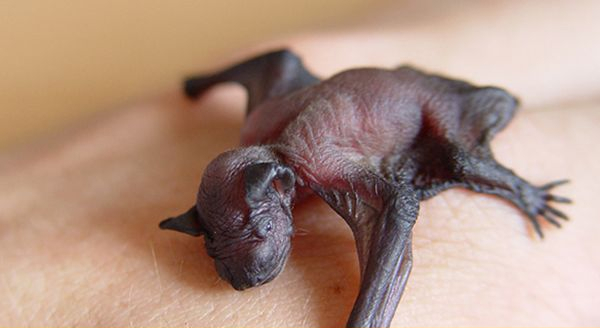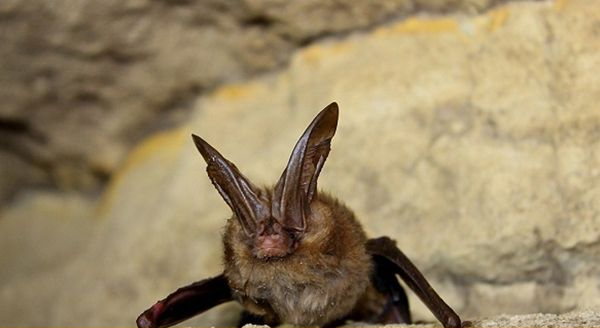When it comes to lifespan, animals that live in the wild generally don’t live as long as their captive counterparts. This is due to a variety of factors, including lack of access to proper medical care and nutrition, and exposure to harsh weather conditions and predators.
Bats are no exception to this rule. Many bats in the wild only live for a few years, while bats in captivity can live for an extended period of time. So how long exactly do bats live?
The answer to this question is somewhat complicated, as there are a number of factors that can affect a bat’s lifespan. For instance, the species of bat in question plays a role in how long the animal lives. Smaller bat species tend to have shorter lifespans than larger ones. Additionally, where the bat lives also affect its lifespan. Bats that live in caves or other protected areas tend to live longer than those that roost out in the open.
How Long Do Bats Live?
In general, bats live anywhere from 10 to 20 years in the wild. However, there are some reports of individual bats living for up to 30 or 40 years. The oldest recorded bat was a mere 41 years old, the male Brandt’s myotis. This means that a bat’s average lifespan is quite good compared to other animals.
Why do bats have such long lifespans?
The secret to a bat’s long life is linked to various ecological and physiological features. Bats can live so long because of their:
- Hibernation patterns
- Mortality risks
- Delayed sexual maturation
First, let’s look at hibernation. Hibernation allows bats to live long periods of time. During this period, they’re away from all the predators, diseases, and other environmental risks. They can live off their stored body fat and survive for months without eating!
Next, we have reduced mortality risks. Studies have shown that bats have a very low risk of death from predators. In fact, the main cause of mortality for these animals is due to humans (either through hunting or habitat destruction).
Last but not least, we have delayed sexual maturation. This means that bats don’t start reproducing until later on in life. This gives them more time to build up their energy reserves and grow larger in size. All of these factors come together to extend a bat’s lifespan.
Common Factors That Affect A Bat’s Lifespan
Many different factors can affect the average bat’s lifespan. Here are some of the most common ones:

Reproductive rate
Reproductive rate is the number of offspring produced by an individual in their lifetime. Animals with a high reproductive rate generally live shorter lifespans than those with a low reproductive rate. And because bats only get to give birth to an average of 1 to 2 pups per year, they have a low reproductive rate. Thus, making their lifespan increase too.

Body mass
The relationship between body mass and lifespan is a bit complicated. Studies on different animals have found that both small and large animals can live long or short lifespans.
However, larger animals generally tend to live longer than smaller ones. This is because they have more “body reserves” that they can draw upon when food is scarce, or they’re sick. They also tend to have fewer predators and are less likely to get diseases.
For bats, their small size means that they don’t have a lot of body reserves to draw upon. However, this is offset by the fact that they have very few predators and live in protected areas (like caves).
Hibernation
Hibernation is a state of dormancy that some animals enter to survive periods of food scarcity or cold weather. When animals hibernate, their body temperature, heart rate, and breathing all slow. This helps them conserve energy and survive for long periods of time without food.
Bats are some of the longest hibernators, with some species hibernating for up to 6 months! This lengthy dormancy period helps them live longer by avoiding predators, diseases, and other environmental risks.

Cave roosting
Another factor that contributes to a bat’s long lifespan is cave roosting. Caves are the perfect roosting environment for bats, as they’re dark, cool, and protected from the elements. This gives them a safe place to rest and avoid predators.
Additionally, caves tend to have a lot of insects for bats to eat. This provides them with a consistent food source, which helps them live longer.
The Bat Life Cycle
Now that we’ve looked at some of the reasons bats have such long lifespans, let’s look at the different stages in a bat’s life cycle.
Gestation
The gestation period for bats is relatively long, lasting anywhere from 50 to 60 days. But the length of pregnancy depends on the species and is affected by various factors like climate, weather, and food availability.
Some bats are known to gestate for 3 to 6 months. The longest bats to gestate are the common vampire bat, at 209 days. Then, there’s also the bent-wing bat at 187 days.

Bat babies
Female bats can have 1 to 2 pups per litter. They’re born hairless, and their eyes are closed, weighing about 10% of their mother’s weight.
For the first few weeks of their lives, baby bats cannot fly. They roost in their mother’s maternity colony and are cared for by the other females. After a few weeks, they can fly and hunt on their own.

Adulthood
Bats reach sexual maturity at different ages, depending on the species. For example, the common vampire bat takes about 9 months to reach maturity. On the other hand, the little brown bat is not sexually mature until their first year.
Once they reach sexual maturity, bats generally live in colonies with other bats of the same species. These colonies can be quite large, with some containing over 1 million individuals!
A year in the life of a bat
Are you curious about what bats do throughout the year? Let’s explore a year in the life of a bat to find out!
January: In a state of Hibernation with low body temperature, low metabolism rate, and slow breathing.
February: Hibernating but with little fat left, encouraging them to leave their roost to look for food for a while.
March: Lesser bat activities and small numbers are seen feeding.
April: They can switch their roosts and become cool and inactive.
May: Bats become fully active and continuously feed. Adult females start forming maternity roosts—mating and gestation period starts.
June: Bats give birth to their pups and fend for them.
July: Mother bats suckle babies. Some baby bats are seen on the ground as they attempt to fly.
August: Young bats attempt to catch small insects, no longer needing their mother’s milk.
September: Mating season begins.
October: More matings happen, and females are extensively storing fats to prepare for the coming winter.
November: Longer periods of torpor or inactivity, while some begin hibernation.
December: Bats hibernate, whether in small or large groups.

Do Bats Hold the Secret to Long Life?
Studies have shown that bats may indeed hold the secret to longevity. Or at least healthy aging. Researchers have found that some bat species have a line of genes in their chromosomes that prevent the shortening of chromosomes when a cell divides.
This shortening is linked to aging and age-related diseases. The line of genes, called telomeres, prevents this from happening and essentially allows cells to live longer. This is why some bat species have been found to have exceptionally long lifespans!
Of course, there’s still a lot we don’t know about bat longevity. But the fact that they live so long despite all the threats they face is definitely impressive.
While the jury is still out on whether or not bats really do hold the secret to long life, one thing is for sure: they’re fascinating creatures that are definitely worth learning more about!
More About Bats
- Bats may fly, but they’re not avians or birds! Bats are the only mammals that can fly.
- Bat wings can be up to 5.6 feet!
- The smallest bat is the bumblebee, the smallest mammal in the world. It weighs less than a penny!
- A fungal disease that affects hibernating bats, called White-nose Syndrome, once wiped out millions of bats in the Northeastern areas of the United States.
- The average bat lifetime is almost half the average human life expectancy! Most bats live 20 years on average and as long as 30 years.
- Some bats consume nectar, flowers, and fruit. The majority of these usually hide in trees and bushes. On the other hand, others are inherently insectivores.
- Bats use Sound Navigation and Ranging (SONAR) or Echolocation to detect their prey and navigate the dark.
- Natural predators of bats include owls, hawks, snakes, and raccoons.
- Bats mate in early summer and late autumn, from April until August.
Need Help With Bats on Your Property?
Bats are infamous for withholding deadly diseases and infections. Call a professional if you have bats on your property and need help getting rid of them. AAAC Wildlife Removal has bat removal experts who can safely eliminate these creatures and clean up any mess they may have left behind.
Pest control and wildlife removal services from AAAC Wildlife Removal are the best you can find. With 24/7 chat support, friendly staff, and competitive rates, we’re here to help you every step. Give us a call today!
Final Word
Bats are flying creatures with a lot of quirks. From their long lifespans to their ability to fly, there’s a lot to learn about these wonderful creatures.
Bats live pretty long, comparable to half of a human’s average life expectancy. These creatures can live up to 30 years old in the wild and even longer in captivity. Various factors influence their lifespan, including their reproduction rate, body mass, hibernation, and cave roosting.
Despite their long lifespans, bats are still at risk of becoming extinct. Various human-made factors, such as deforestation and the use of pesticides, have contributed to their decline in numbers. Bats are also hunted for food and traditional medicine in some parts of the world.
We can all do our part to help these creatures by continuing to learn about them and doing our best to protect their natural habitats.
To explore more about the lifespan of bats and their fascinating characteristics, click here: bat lifespan.
FAQS
What parts of my house can bats infest?
Bats can infest any part of your house, including the attic, chimney, and basement.
How do I know if I have bats in my house?
The most common sign of a bat infestation is the presence of droppings or urine stains in your home. You may also see these creatures flying around at night or hear them scratching on walls or ceilings.
What danger can bats bring into my home?
A disease like rabies can be transmitted from bats to people. Viruses like the Nipah virus and Hendra virus also pose threats to your health. Other than that, bats contribute structural damage to your place. They can leave stains and droppings that are difficult to clean.
How do I get rid of bats in my house?
The best way to get rid of bats in your house is to call a professional wildlife removal company. These experts will safely and efficiently remove the bats from your property and clean up any mess they may have left behind.














